#Earrach
Text

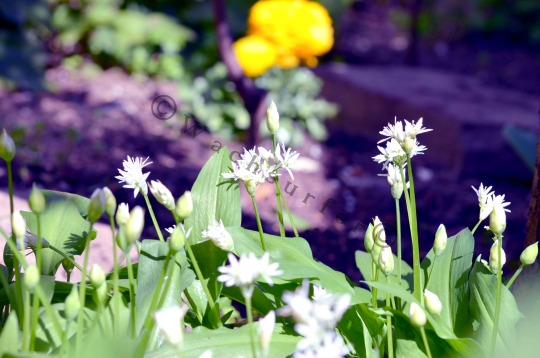

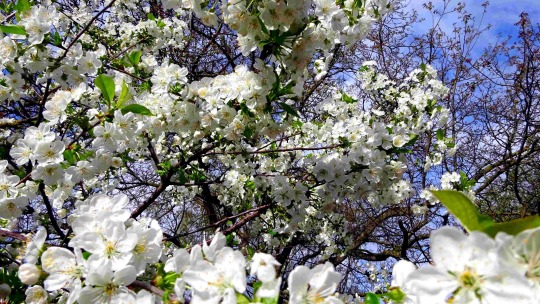
Frühling! Primavera! Spring! Printemps! գարուն! Earrach! वसन्तः! άνοιξη!
49 notes
·
View notes
Text
youtube
Lá fhéile Bríde sona daoibh! Tá an tEarrach linn.
#Tús an Earraigh#Imbolc shona!#Lá le Bríde#Imbolg#St. Brigid's Day#Imbolc#Spring#Earrach#Brigid#Irish#Sadbh Kellett#Irish poetry#Irish mythology#Youtube#ireland#lá fhéile bríde#st brigid
2 notes
·
View notes
Text
uh oh i might be ill
#im feeling more and more sick as the day goes on and my NECK hurts.#which is giving me toothache and earrache and its like. have i pulled a muscle or are there some fucked up glands and pipes
1 note
·
View note
Text
Every Pagan Holiday
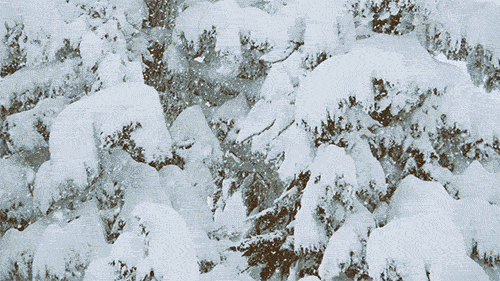
JANUARY
KALENDS
1st January
Origins: Ancient Greece/Rome
Observed by: Hellenic/Roman polytheists
Honouring Janus/Juno, first day of the Year. Kalends brought us the word 'calendar'.
ÞORRABLÓT (THORRABLÓT)
End of January/beginning of February
Origins: Iceland
Observed by: Heathens, Asatru
Midwinter Festival honouring Thor, usually by feasting and poetry.

FEBRUARY
IMBOLC
2nd February
Origins: Celtic polytheism /Ireland, as St. Brigid's Day
Observed by: Most neopagans, Wiccans, Druids, Asatru (as Charming of the Plow)
Imbolc is the most widely known and observed pagan holiday in the months of January and February. It falls at the beginning of spring/end of the winter for the Celtic peoples; marking the changing of the seasons, as most holidays do. St. Brigid is a Christianised form of or inspired by the Celtic fertility goddess Brigid who is celebrated on this day.
PARENTALIA
13th-21st February
Origins: Ancient Rome
Observed by: Greco-Roman polytheists
Translating to 'Ancestors Day', Parentalia is a nine-day celebration of deceased ancestors. Historically it was observed by feasting and making offerings and sacrifices to the dead and spirits of the underworld.
VÁLI'S BLOT
14th February
Origins: Old Norse
Observed by: Heathens, Asatru, Norse polytheists
Váli's Blot is considered by some Asatru to be the Norse equivalent of Valentine's Day but is widely acknowledged as a season changing festival. A day for marriage and celebrating with family and friends, and for remembrance of Váli, the son of Odin who defeated Höðr on this day.
LUPERCALIA
15th February
Origins: Ancient Rome
Observed by: Greco-Roman polytheists
Festival thought to honour a wolf who raised abandoned princes, celebrated originally by sacrificing goats to the gods, feasting, and, for fertility, nudity and fornication.
LESSER ELEUSINIAN MYSTERIES
17th-23rd February
Origins: Ancient Greece
Observed by: Hellenic polytheists
Initiation to the cult of Persephone and Demeter by sacrificing a pig. Prelude to Greater Mysteries, initiations held on these dates. Once completed, initiates could then move onto Greater Mysteries in the autumn.
ANTHESTERIA
27th February - 1st March 2021
Origins: Ancient Greece
Observed by: Hellenic polytheists
Athenian festivals dedicated to Dionysus and the dead. Held around the full moon in the month of Anthesterion, which in the Gregorian calendar this year roughly translates to 27th February.
THE DISTING/DÍSABLÓT
End of February/beginning of March
Origins: Uppsala, Sweden
Observed by: Heathens, Asatru, Norse polytheists
Celebration of Valkyries and other female spirits, called dísir. Sacrifices were made for a good harvest. Celebrated still by an annual market in Sweden.

MARCH
KALENDS
1st March
Origins: Ancient Greece/Rome
Observed by: Hellenic/Roman polytheists
Honouring the god Mars/Ares. Kalends brought us the word 'calendar'.
OSTARA/EARRACH
20th March
Origins: Anglo Saxon paganism, popularised as Ostara by Wicca
Observed by: Anglo Saxon Pagans, Wiccans, Neopagans, Druids (as Alba Eilir), Heathens (as Summer Finding), Ásatrú (as Sigrblót)
The northern hemisphere's vernal equinox, the word Ostara was introduced though Wicca and named for the goddess Eostre. Surprisingly unrelated to Easter in all but name, Ostara symbolises the beginning of spring. As a seasonal holiday it is widely celebrated by many different groups of pagans.
RAGNAR LODBROK'S DAY
28th March
Origins: Icelandic Sagas
Observed by: Ásatrú
Day of remembrance for Ragnar Lodbrok, Viking King of legend

APRIL
KALENDS/VENERALIA
1st April
Origins: Ancient Greece/Rome
Observed by: Hellenic/Roman polytheists
Celebration of the first of the month, this one honouring the goddess, Venus.
REMEMBRANCE FOR HAAKON SIGURDSSON
9th April
Origins: Norway, C9th
Observed by: Ásatrú
Day of remembrance for ruler of Norway who claimed lineage to Odin in the Icelandic Sagas.
WALPURGISNACHT
30th April
Origins: German Christianity, originally Saint Walpurga was known for banishing witches and other pests
Observed by: LaVeyan Satanists
Anton LaVey chose to celebrate this holiday as a follow up to the spring equinox and due to its past association with witchcraft.
HEXENNACHT (WITCHES' NIGHT)
30th April
Origins: German folklore, as Walpurgisnacht but witches were alleged to convene with the devil in this night
Observed by: Temple of Satan as 'a solemn holiday to honour those who were victimized by superstition'.

MAY
BEALTAINE/BELTANE
1st May
Origins: Celtic (Ireland/Scotland/Isle of Man)
Observed by: Wiccans, Neopagans, Celtic reconstructionist, Ásatrú/Heathens (as May Day)
One of the more well-known pagan festivals, Beltane is a festival of fire and the beginning of the summer. Also widely referred to as May Day, it is celebrated by lighting fires.
KALENDS
1st May
Origins: Ancient Greece/Rome
Observed by: Hellenic/Roman polytheists
Honouring the goddess Maia, for whom the month may have been named.
REMEMBRANCE FOR Guðröðr of Guðbrandsdál
9th May
Origins: C11 Norway, Icelandic Sagas
Observed by: Ásatrú, Norse, heathens
Guðröðr had his tongue removed by Óláfr for rebelling against violent conversion from Norse paganism to Christianity.
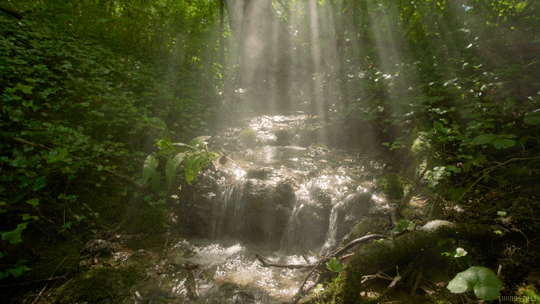
JUNE
KALENDS
1st June
Origins: Ancient Greece/Rome
Observed by: Hellenic/Roman polytheists
Anniversary of temples to Juno Moneta (protectress of money, her temple was where coins were made), Mars/Ares (God of war), and the Tempestates (goddesses of storms).
ARRHEPHORIA
3rd Skirophorion (translates to mid-June)
Origins: Ancient Greece
Observed by: Hellenic reconstructionist
Feast in celebration of Athena and fertility.
MIDSUMMER/SUMMER SOLSTICE
21st June
Origins: Agricultural holiday/longest day observed for centuries by many civilisations. Christianity can date to as early as C4th
Observed by: Wiccans/Germanic neopagans (as Litha), Asatru/Heathens, Druids (as Alban Hefin)
One of the main four holidays in the Wheel of the Year and popularised by Wiccans and neopagans as Litha which is taken from the Anglo-Saxon words for June/July, this is the longest day of the year and the middle point and sometimes considered the beginning of summer.

JULY
REMEMBRANCE FOR UNNR/AUD THE DEEP MINDED
9th July
Origins: C9th Iceland
Observed by: Ásatrú, Heathens, Norse reconstructionist
Aud was a traveller in the 9th century moving between Dublin, the Hebrides, Orkney, and finally Iceland following the deaths of her husband and son. This day is to honour her memory.
HERACLEIA
July/August
Origins: Ancient Greece
Observed by: Hellenic polytheists
Festival dedicated to Heracles the demigod and his death, involving feasting and celebration.

AUGUST
LUGHNASADH/LAMMAS
1st August
Origins: Celtic Britain (Ireland, Scotland, Isle of Man)
Observed by: Wiccans, Neopagans, Christians (as Lammas), Ásatrú (as Freyfaxi)
Named for the god Lugh, this festival is one of the Celtic harvest festivals and marks the beginning of the harvesting months. It was celebrated by climbing mountains, bull sacrifice, offerings, and feasting. Handfasting is commonplace with Wiccans in modern times.
REMEMBRANCE FOR REDBAD, KING OF THE FRISIANS
9th August
Origins: C7th Frisia (area of Germany/Netherlands)
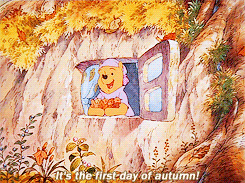
SEPTEMBER
NOUMENIA
8th September
Origins: Ancient Greece
Observed by: Hellenic polytheists
Celebration of new Hellenic lunar month. Offerings of honey and incense made to household deities.
REMEMBRANCE FOR HERMANN THE CHERUSCAN
9th September
Origins: C9th CE
Observed by: Heathens, Ásatrú
Hermann the Cheruscan, also known as Arminius of the Cherusci tribe, led the defeat against the Romans at the Battle of Teutoburg Forest and is lauded for saving Eastern Germanic peoples from being conquered by the Roman Empire.
AUTUMN EQUINOX (NORTHERN HEMISPHERE)
22nd September
Origins: 1970s neopaganism
Observed by: Wiccans and Neopagans (as Mabon), Ásatrú (as Winter Finding)
Named Mabon by prominent Wicca and Neopagan Aidan Kelly, after the Welsh mythological figure Mabon ap Moldron, the autumn equinox is one of the harvest festivals and marks the beginning of autumn in the northern hemisphere. Mabon is a relatively new pagan holiday not based on any specific historical festival, but traditionally people around the world would celebrate some kind of harvest festival around the end of September/beginning of October.
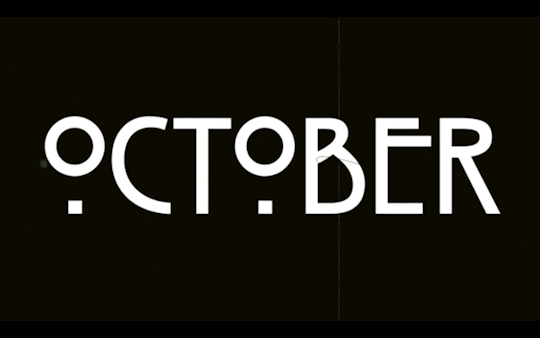
OCTOBER
PYANOPSIA
7th October
Origins: Ancient Greece
Observed by: Hellenic polytheists
Pyanopsia, or Pyanepsia, is a festival to honour Apollo, one of the most important deities, God of music, the sun, knowledge, healing, and archery - amongst other things. During the festival, two special offerings would be placed on doorways and carried to the temple. These offerings were a bean stew, and an olive branch wrapped in wool with honeys, pastries and seasonal fruits hanging from it.
REMEMBRANCE FOR LEIF EIRIKSSON
9th October
Origins: C10th CE
Observed by: Heathens, Ásatrú, Norse pagans
Remembrance for Leif and his sister Freydís Eiríksdóttir, children of Erik the Red, who are cited with being the first Norse explorers in North America.
THESMOPHORIA
12th-14th October
Origins: Ancient Greece
Observed by: Hellenic polytheists
Festival held in honour of Demeter Thesmophoros, goddess of agriculture, and her daughter Persephone, goddess of death and life, Queen of the Underworld. Celebrated primarily by women, this festival is linked with fertility, and we know very little about it due to its secretive rites. It is thought that it involved the sacrifice of pigs (although some sources say women), and abstinence.
REMEMBRANCE FOR ERIK THE RED
28th October
Origins: C9th CE
Observed by: Heathens, Ásatrú, Norse pagans
Erik the Red, probably named for the colour of his hair and beard, was the first permanent European settler in Greenland. His children were explorers too, who went to America, and although his wife converted to Christianity, Erik remained faithful to his Norse pagan gods.
SAMHAIN (HALLOWE'EN)
31st October-1st November
Origins: Gaelic - Scotland, Ireland, Isle of Man
Observed by: Celtic pagans, Neopagans, Wiccans
Pronounced SOW-in (sow rhyming with cow), Samhain was originally a harvest festival marking the beginning of winter. The day itself is the 1st November, but celebrations begin on October 31st, and this has become the accepted associated day. It's a festival of the dead, where the síthe, fae and spirits, can enter this realm from their own. Wiccans talk of a 'veil' thinning, meaning the boundary between worlds. Similar death related festivals around this time can be noted in other faiths from across the globe, and of course in the modern Hallowe'en.
WINTER NIGHTS (VETRNAETR), ÁLFABLÓT/DÍSABLÓT
31st October
Origins:
Celebrated by: Heathens, Ásatrú, Norse pagans
Winter Nights is mentioned in the Ynglinga Saga as one of the three greatest blessings of the year, the other two being Sigrblót in April, and þorrablót in late Jan/early Feb. Winter Nights is the celebration of the beginning of the winter season; Álfablót is a sacrifice to the elves, and Dísablót a sacrifice to the female spirits (dísir) and Valkyries.
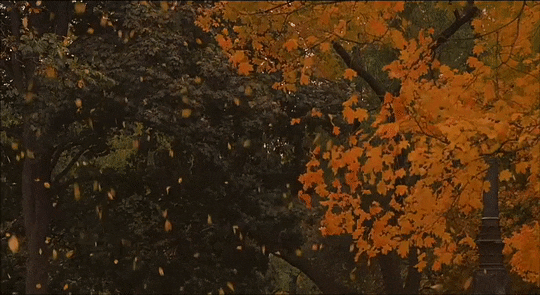
NOVEMBER
REMEMBRANCE FOR SIGRID THE HAUGHTY
9th November
Origins: C9th CE
Observed by: Heathens, Ásatrú, Norse pagans
It is not actually known whether Sigrid Storråda, or Sigrid the Haughty, was an actual historical figure, an amalgamation of a few, or simply a myth. The lore goes that she was proposed to multiple times and turned down many but went on to orchestrate conflict when a potential suitor - Olaf Tryggvason, King of Norway - attempted to convert her to Christianity.
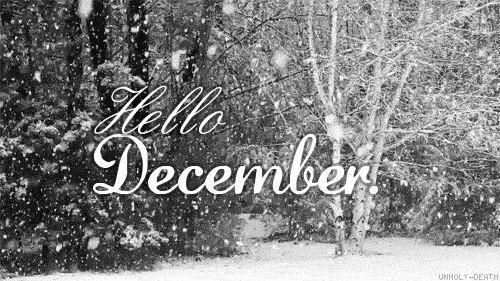
DECEMBER
REMEMBRANCE FOR EGILL SKALLAGRÍMSSON
9th December
Origins: C10th CE
Observed by: Heathens, Ásatrú, Norse pagans
Day celebrating the poet, farmer, and berserker Egill Skallagrímsson, who is recalled in The Icelandic Sagas by Snorri Sturluson. Egill is known for his many killings and escaping death by writing an epic poem after being captured when washing up on our Northumberland coastline.
SATURNALIA
17th - 23rd December
Origins: Ancient Rome
Observed by: Roman polytheists, some Hellenic
Like Yule and Lesser Dionysia, Saturnalia was the Roman winter festival celebrating the coming return of the sun and honouring the god Saturn. The standard feasting and drinking feature, and slaves would be treated as equals like Dionysia. Saturnalia is another festival cited as being picked up by Christians and used as inspiration for Christmas.
WINTER SOLSTICE (YULE/MIDWINTER)
21st December
Origins: Germanic nations, as early as C4th CE
Observed by: Norse pagans, Wiccans, Neopagans, LaVeyan Satanists, Ásatrú, Heathens, many Germanic nonpagan peoples
Yule is the midwinter festival known commonly among pagans as a time for feasting, being with loved ones, remembering ancestors, and looking forward to the return of the light and warmer days. Many pagans will celebrate Yule for more than one day, some celebrating a week either side, some for longer, up to two months, and some for twelve days afterwards. True Yule would have originally been in January for midwinter, but King Haakon the Good
moved it to coincide with the Christian celebrations in the 10th century, as told in the Ynglinga Saga.
On the 24th of December, Anglo Saxons are said to have celebrated 'Mothers Night' honouring female ancestors.
RURAL/LESSER DIONYSIA
End of December/beginning of January
Origins: Ancient Greece
Observed by: Hellenic polytheists
Smaller festival honouring the god Dionysus (Greater Dionysia took place in cities at the end of winter). Feasting, mask wearing to stop distinction between classes so that everyone could feel equal, sacrifices, parades, and phallic display were all used to celebrate.
#wheel of the year#wiccan#pagan#heathen#greek#mythology#holidays#religious holidays#pagan holidays#non-Abrahamic holidays#witch#witchcraft#witchblr#pagan wicca#polytheism#paganism#witches#witch holidays#witches holidays#pagan witch
176 notes
·
View notes
Text










#chubby#beardedmen#masculinity#massive#woof#bearmythology#bigbear#biggerisbetter#beautyofbigger#bigbeautifulman#ai artwork#ai art
54 notes
·
View notes
Text
TEANGLANN's word of the day is EARRACH which is the Irish for SPRING
14 notes
·
View notes
Text
Nighean donn na buaile
dham bheil an gluasad farasta,
gun tug mi gaol co buan duit
’s nach gluais e air an Earrach so.
Brown-haired girl of the cattle-fold
who moves so gracefully, I have
given you love so everlasting that it
will not waver this springtime.
opening lines to old Highland air Nighean donn na buaile (before 1812)
from here
2 notes
·
View notes
Text
Tuigim le Fírinne (I Really Do Understand)
Ceol & Liricí: Funakoshi-P
Bunteideal: ほんとは分かってる
Amhránaí: Hatsune Miku
As seo amach, fiú rudaí mar ag crochadh thart le gach duine -
Bhíomar ag caint agus ag gáire faoi, ach…
Tá a fhios agam an fhírinne, tuigim é
Ní bheidh mé in ann am a caitheamh mar seo go deo arís
An radharc an bhóthair chnoic a shiúil mé uaireanta iomadúla
Níl seans dá laghad a dhéanfainn dearmad air
Nuair a mbeidh sé an t-earrach, beidh peitil ag snámh agus ag damhsa
Fiú ar an bóthar seo go cinnte
Ag an am sin, ní fheadar cé agus cá bheimid?
Fiú go héireoimid ar leith, ní imeoidh an am a chaitheamar le chéile
Mar sin, ag crith ár lámha meidhreacha agus ag déanamh miongháirí, abraimis slán
Cairde nua agus, b’fhéidir, buachaill nua
Tá rudaí éagsúla mar seo ag méadú faoi láthair
Na héadaí scoile an-truflais gur fuath liom,
Anois tá fiú siad cineál dil dom
Nuair a mbeidh sé an t-earrach, as sin amach is cinnte
Gur nach mbeimid in ann bualadh le chéile beagán ar bheagán
Áfach, fós féin, ní gá duinn cleachta leis a éirí
Ní mhaith liom a stopadh, tá sé uaigneach gan dabht
Mar sin sa deireadh, ag crith ár lámha agus ag déanamh miongháirí, abraimis slán
Fiú anois, mar go bhfuil sé an t-earrach, cuimhním muid shimplí ón am sin
Ní fhacamar na staighre go haosacht ar chor ar bith
Mar go d’éiríomar ar leith, ní fheadar conas a bhfuil gach duine?
Má bhíonn an seans againn lá éigin, buailimis le chéile le miongháirí
Beadh sé sin go deas
#gaeilge#vocaloid#irish#translation#vocal synth#irish language#project diva#miku#hatsune miku#miku hatsune#mikuhatsune#vocaloid miku#hatsune#vocaloid hatsune
3 notes
·
View notes
Text

I will never do anything for my muses' birthdays but I actually have headcanons about the time they were born so...
In one of the tales of the birth of Cú Chulainn, it's mentioned that he was born during the coldest days of the year, in a particularly crude winter, in which the snow reached the thighs of the Ulster warriors. The average of the coldest days recorded in Ireland is between the 2nd and 16th of January. So Cú was born at the end of winter or Geimhreadh in the first half of the month of January or Eanáir according to the Gaelic calendar.
My headcanon for Emer's birthday is on February 1st (Imbolc), at the beginning of spring (which starts on St Brigid’s Day on February 1st, celebrating the end of winter), or Earrach according to the Gaelic calendar. Cú's and Emer's birthdays are not even one month apart and, fun fact! one of the conditions that Cú told to the men of Ulster that were looking for a bride for him was that his future wife should be the same age as him.
Finally, Ferdiad was born in August or Lúnasa, the beginning of the Harvest (Fómhar) season. Lughnasadh occurred during a very poor time of the year for the farming community. Traditionally, there were visits to holy wells and religious rites included an offering of the First Fruits, a feast of the new food and of bilberries, the sacrifice of a bull, and a ritual dance-play in which Lugh seizes the harvest for mankind and defeats the powers of blight. Which I feel is fitting for a fir domnann like Ferdiad.
#hc. ° ( shooting star. )#cu. ° ( lancer. )#emer. ° ( assassin. )#ferdia. ° ( saber. )#/ i love them your honor
4 notes
·
View notes
Text
The railway lines on Seidrey are the Gunnigrind & Tarfalam Line, Ben Fisag Branch, & Kirktobaness Light Railway, and the Tarfalam, Chraig, & Laughof Railway
The stations along the railways (and their Scots Gaelic translations
Main Line
Mainland from Wilkhaven, connecting to the Far North Line at Fearn
Tarfalam (Tarsainn Falamh)
• Tarfalam Chraig & Langhof Railway
Dochas (Dóchas)
Lubadmore (Lùbadh Mòr)
• Dairy
Gunn Castle (Caisteal Guinnich)
• Kirktobaness Light Railway
• Guinnich Brewery
Tradham (Ag Ionaltradh Neamh)
• Farm
Samchair (Sàmhchair mu Dheireadh)
Gunnigrind (Port O' Guinnich)
• Ben Fisag Branch
• MOD
• Main Shed
• Port/Fishing
•Stewart's Holiday Camp
Kirktobaness Light Railway
Gunn Castle (Caisteal Guinnich)
• Mainline
• Guinnich Distillery
Kirktobaness (Caisteal ri Taobh an Eas)
Ben Fisag Branch (Beinn Phiseag)
Gunnigrind (Port O' Guinnich)
• Mainline
• MOD
• Main Shed
• Port/Fishing
• Holiday Camp
Bailanns (Bhaile Anns na Beanntan)
• Bailanns Distillery
Gemsted (Áite Falaich)
• Game Lodge
Hörgr (Aoradh)
• Stone Quarry
Tarfalam, Chraig, & Langhof Railway
Tarfalam (Tarsainn Falamh)
• Mainline
Chraig Castle (Caisteal Air a' Chreig)
Mountain Farms
Laughof Central (Bath Earrach Teth)
• Stewart's Hot Spring Resort
• Laughof Academy
Laughof Main Street
Hiking Hault
Bonniebear (Bonn na Bearraidh)
• Fishing Town
The History
In 1868 the Tarfalam & Gunnigrind Railway was formed, and started construction from the Sutherland Railway station at Fearn, crossing the water from the mainland at Wilkhaven to the island at Gunnigrind. Construction was finished in 1874. It was absorbed into the Highland in 1884 (they were already providing services along the line), the same time as the Sutherland, Duke of Sutherland Railway, and Sutherland & Caithness Railway.
In 1890 the Highland built the branch up to Aoradh and double tracked the entire line from Inverness to Gunnigrind, strengthening the line more than they would ever need (end enough for the LMS to even run Pacifics on it in the 30s).
The Kirktobaness Light Railway started construction in 1900, and was opened in 1902, a part of the Highland, but heavily subsidized by the chief of Clan Gunn at the time. Despite the station name of Gunn Castle, the actual castle was around 7 miles away at Kirktobaness, so a light railway was built out to it. The railway had bypassed it in the beginning due to the 1 in 45 gradients required to the town and castle
In 1915 a naval base was constructed at Gunnigrind.
In 1923 the Highland railway was grouped into the LMS, however other than a new coat of paint, the roster didn't change much. The line, like most of the surrounding lines, was given the shed code 32A.
In 1928 a Gunnigrind local and millionaire, Roger Masters, took a visit to Kent and became infatuated with the the Romney, Hythe and Dymchurch Railway, and decided he wanted to bring such small charm to Seidrey. He got his friend Emmett Stewart in on the action, and next year a Light Railway Order was applied for and granted for a fifteen inch gauge line from Tarfalam to the hot springs at Laughof, and in 1930 construction began on the Tarfalam, Chraig, & Laughof Railway (they also stole the locomotive designer, Henry Greenly, from the RH&DR in March 1929). The railway was opened in 1931 from Tarfalam to Laughof. The railway helped build Mr. Stewart's hot springs spa and resort at Laughof, and then bring passengers to it. It also had sidings at the local farms to haul wool to the mainline.
In 1929 the LMS started testing 6299 Fury on the line and due to it's early faults, a year later a new express locomotive arrived, Royal Scot class 6168 The Girl Guide
Other engines started to arrive through the years, including Patriots, moguls, 8fs, Stanier red and black 5's, a Pacific, 6204 Princess Louise, and even the Turbomotive.
In 1937 the TC&L was extended to the seaside town of Bonniebear. Fish trains were attempted, to surprisingly moderate success.
During the war, the naval base got a lot of traffic, and an Austerity tank, a WD 2-8-0 and two 2-10-0s were moved to the region, and stayed, even after the war.
The 2-10-0s were absolutely crucial on the Ben Fisag Branch, as the rails at the stone quarry past Hörgr were so light that none of the LMS built engines assigned to the region could run on them, so they were being run by increasingly tired HR locomotives until the 2-10-0s showed up.
One oddity about the Gunnigrind & Tarfalam is it is a near perfect microcosm of the WCML, so experimental locomotives were sent here for trials. In December 1947 this was the case for 6256 Sir William A. Stainer, F.R.S. and 10000, who found their homes here (almost all LMS and LMS ordered experimental diesels also found their home here). Because of this, the Gunnigrind sheds had a heavy maintenance sheds for diesels, always stocked with parts for the sometimes temperamental LMS diesels.
BR's takeover once again didn't change much at first, only a few BR standard class 5 and 6s showed up. The shed code was changed to 60F
However, in 1966, the Benching Axe fell for both the Kirktobaness Light Railway and Ben Fisag Branch, as standard classes of diesels took over the island.
Named Passenger Trains and their stops
The Black Wolf (Sleeper Train) (Hauled by Royal Scots, Rebuilt Patriots, or Pacifics)
Gunnigrind
Tarfalam
Perth
Stirling
Glasgow Buchanan Street (later Queen Street)
Symington Junction
Carlisle Kingmoor
Preston
Crewe
Stafford
Rugby
London Euston (from 1966-1981 Kensington Olympia)
Glasgow Highlander (Hauled by Patriots or Jubilees)
Gunnigrind
Tarfalam
Perth
Dunblane
Stirling
Glasgow Buchanan Street (later Queen Street)
Edinburgh Highlander (Hauled by Patriots or Jubilees)
Gunnigrind
Tarfalam
Perth
Dunblane
Stirling
Falkirk Grahamston
Edinburgh Princes Street (later Edinburgh Waverly)
Aberdeen Highlander (Hauled by Patriots or Jubilees)
Gunnigrind
Tarfalam
Keith
Aberdeen Joint
Seidr Pullman / Seidrian (Runs opposite days) (Hauled by Royal Scots, Rebuilt Patriots, or Pacifics)
Gunnigrind
Tarfalam
Perth
Stirling
Glasgow Buchanan Street (later Queen Street)
Symington Junction
Carlisle Kingmoor
Workington
Whitehaven
Barrow-in-Furnesa (Engine Change to NWR)
Crovan's Gate
Tidmouth
The Spa Express
Tarfalam
Laughof
Preservation
A large amount of steam locomotives from this line survived. When withdrawing old HR engines, the railway liked to donate one of a class to a village along the line. Once this was unreasonable, Roger Masters, the Creator of the Tarfalam Chraig & Langhof Railway, created a "scrap yard" where he could store engines.
In 1948, the Guinnich Distillery purchased the HR Clan class locomotive 54765 Clan Stewart (the express engines of the line until 1930, and which has been retired in 1945) as well as the wooden Pullman coaches that ran the Seidr Pullman to use as a display and diner/bar.
When the LMS express engines were retired, they were put on display, some at the Gunnigrind Resort, some others at the Butlins Ayr resort.
In 1966, when the Ben Fisag Branch closed, preservationists, led by Mr. Masters, managed to come up with enough money to buy the branch and all locomotives that served it and the two tank engines that ran the Kirktobaness Light Railway, creating the Ben Fisag Railway.
In 1968, they also purchased the (at that point disused) Gunnigrind engine facilities, retrofitting the diesel works so they could also maintain their steam engines, and started restoring some of them to operation. They started purchasing the Highland Railway locomotives on display around the island, restoring them to operating condition.
In 1971 the train bought by Guinnich Distillery was restored at the works for operation, now that the distillery could do an actual running dinner train on the mainline.
Throughout the 1980s, the engines that had been displayed at holiday camps were purchased back by the museum and trust for mainline use.
All names and history are subject to change as I figure more working solutions, this is a living story.
#Seidrey#trains#this is a massive thing sorryyyyy#but im passionate#vaguely ttte#anyone who speaks scots gaelic i am sorry i dont and am having to use google translate#lore
2 notes
·
View notes
Text
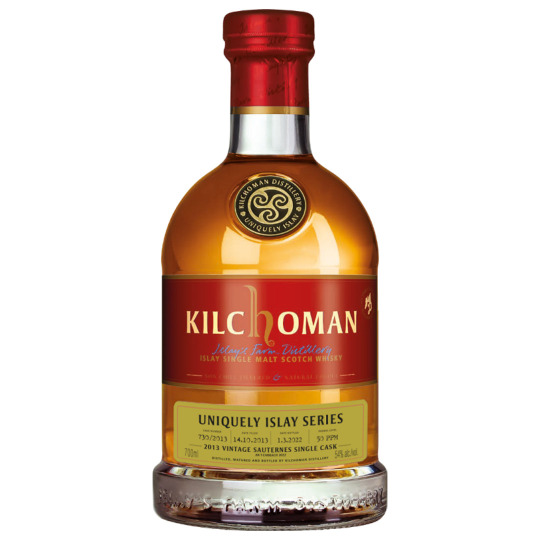
Kilchoman Whisky Uniquely Islay Series Single Cask Vintage 2013 54% vol. 2022
The "Uniquely Islay Series - An T-Earrach 2022" is a bottling series of 10 single casks specially selected by Distillery founder Anthony Wills. This vintage from 2013 is 8 years old, peated with 50 ppm phenolic content and is the third of the ten releases. Of course, not cold-filtered and without dye!
Region : Islay
54 % alc./vol.
0,7l
not chill-filtered
Type of cask : Sauternes Single Cask
Cask number : 730/2013
Distilled : 14.10.2013
Bottled : 01.03.2022
Number of bottles : 262
50 ppm
8 y.o.
2 notes
·
View notes
Text
went out last night but had to call it quits at 20 past midnight cos i had a really bad earrache n i still feel so rough like my voice is non existent (that's mainly cos of the football) and everything hurts i hate it here
1 note
·
View note
Text

A painting from a while back. Realisation about aging, mortality, death. An t-Earrach Deireanach. Acrylics on 30x24".
0 notes
Text
Spring's comin' time to hit the gym.









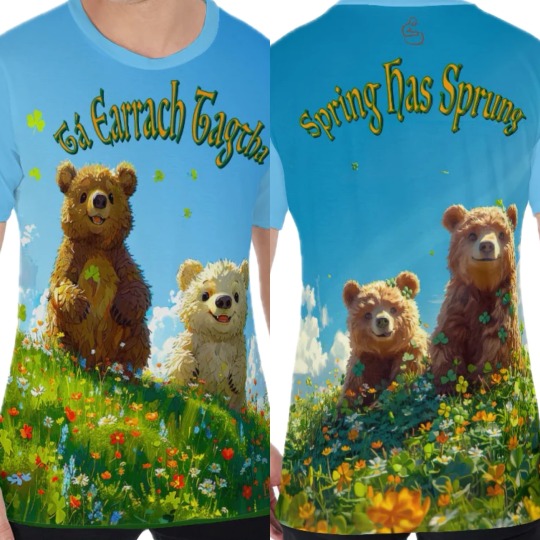
#bearmythology#woof#bigbear#masculinity#beardedmen#massive#beautyofbigger#chubby#biggerisbetter#bigbeautifulman#daddy bears#gay bears#bears#beefy bears#ai artwork#ai image
34 notes
·
View notes
Photo

ArtFight 2023: Earrach Léim
ArtFight 2023
Team Vampire
Character belongs to MoBubbles
So rusty...I don't draw much between ArtFights >.<
Either way, I also wanted to try new things with this first attack and well...I'm on the fence if I like it or not. We'll see going forward.
Posted using PostyBirb
0 notes
